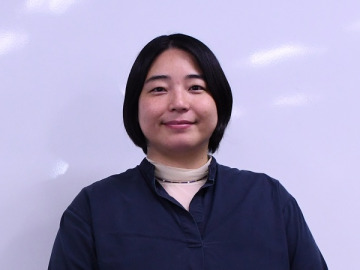
- Kanami Orihara, Assistant Professor (November, 2014)
My Own Experience As An Allergic Patient Sparks Interest
The term “allergy” is often used in everyday conversation, but academically, it refers to a condition in which the immune system (which primarily protects the body from invaders such as viruses and bacteria) reacts excessively to substances that are harmless to the human body. Since I myself have suffered from severe asthma, among immunology studies, I have had a particular interest in these allergic reactions. In fact, once I began studying immunology, I found the field to be extremely deep. I was fascinated by how interesting this field is. Thus, soon after entering the university, I began studying immunologyallergy and allergyimmunology, something I still continue to do nowthese days.
Th2 Cells and IgE, Two Key Players in Allergic Reactions
Allergic reactions are extremely complicated phenomena, which involves a variety of cells and substances. Th2 cells and a protein called IgE are believed to play especially important roles. Th2 cells are a subtype of T lymphocytes, and they help to induce allergic reactions. Allergic symptoms can get worsen as these cells proliferate. IgE is a type of antibody, which can be compared to a weapon that attacks parasites and other substances that are harmful to the body, and thereby prevents infections. The state, in which items that combine with substances that are originally harmless to the human body (such as pollens, mites, and foods) have increased inside IgE, is called “allergic”. IgE exists in large quantities in the blood of allergic patients. This IgE is therefore believed to induce a variety of allergic reactions.
Past studies on allergies mainly focused on these Th2 cells and IgE, and produced a wide range of knowledge and findings. Many different treatment options have been developed, and that most of the allergic symptoms can be suppressed by drugs. On the other hand, reactions, which cannot be treated by current medications, occur inside the airways and the skin, is called “tissue remodeling”. These symptoms are irreversible once they occur, thus although it is difficult, future studies to investigate new target in this aspect is eagerly awaited.
Perspectives from Non-Immunology Studies: A Neurological Standpoint
As a trigger to initiate new research, I have attempted to study allergic reactions from the aspect of neuroimmunology, since my days studying in Canada. There was a breakthrough after recent immunological approaches played a part in elucidating the pathology of neurodegenerative diseases such as Parkinson’s disease, Alzheimer’s disease, and multiple sclerosis, which were regarded as neurological diseases. If this was the case, I felt that, neurological phenomena may also be involved in allergic reactions. In fact, nerves are involved in coughing, and the itchiness attributable to atopic dermatitis is also a neurological symptom.
I, therefore, collected human blood samples and investigated if there were changes in the expression of neurotransmitter related genes in the lymphocytes. As a result, I discovered that the expression of neurotransmitter receptors increases upon cell activation. It also was revealed that Th2 inflammatory responses enhance with cell triggering with neurotransmitters. Thus, I hope to identify the mechanism by which neurotransmitter-mediated allergic reactions occur, and connect these findings to the development of new treatment options.
Non-IgE-Mediated Allergic Symptoms: To Save Babies from Diagnostic Errors
Many allergy patients show elevated levels of IgE in the peripheral blood. This has been used in clinical practice as one of the indicators for allergy diagnosis. Recently, however, it has been revealed that in some patients, there are serious allergic reactions caused mainly by food-derived proteins, without showing high IgE levels. This type of allergy is classified as non-IgE-mediated allergy. There are reportedly over 5,000 or so patients nationwide with this type of gastrointestinal allergies. Many of these patients are infants, including neonates, and some cases can be fatal. Despite this, cases are often confused with other gastrointestinal diseases, and many patients are remained not receiving the correct diagnosis. Thus, I am currently collaborating with physicians at the National Center for Child Health and Development to carry out joint studies with a goal of discovering diagnostic markers for this non-IgE-mediated gastrointestinal allergy.
Previously, our group has pointed out the possibility that allergen-specific lymphocyte proliferation tests may be effective in diagnosis of non-IgE-mediated milk allergies and detecting such patients. By adding various milk allergen components to blood cells from those patients and culturing them for several days, we found that the cell count increases in non-IgE-mediated allergy patients compared to healthy individuals. Unfortunately, however, the usefulness of this lymphocyte proliferation test seems limited, and is only less than 70% positive in all the non-IgE-mediated allergy patients tested.
Non-IgE-mediated allergic reactions can be classified into four clusters according to the presence or absence of vomiting and bloody stool. Of the subjects, those with vomiting were able to receive a diagnosis based on a lymphocyte proliferation test with a probability of around 75%. In contrast, subjects who did not have vomiting, especially those who also did not have bloody stool, were able to receive the diagnosis with a probability of less than 50% only. In futureI am planning to continue this study by combining this test with other exams to improve its sensitivity and specificity even further, so that it may be used as a diagnostic marker at actual clinical practice sites. Moreover, Hhaving a background in pharmacy, I hope to become a researcher to bridge between physicians who engaged in diagnosis/treatment at clinics and researchers who carry out basic research.
Interview and Composition: Chihiro Amano
In cooperation with: Waseda University Graduate School of Political Science J-School










